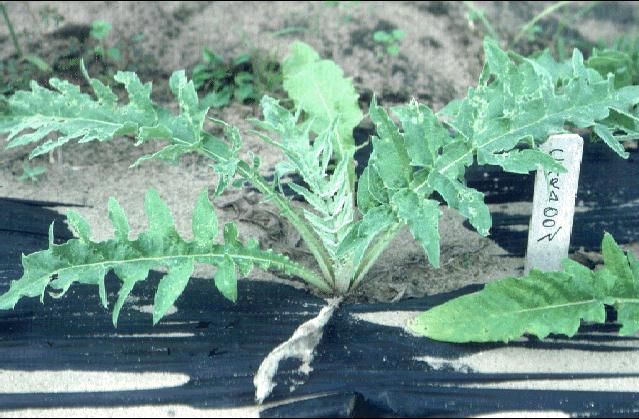Cardoon—Cynara cardunculus L.1
Cardoon is similar to the globe artichoke. With cardoon the young tender leaves and undeveloped tender flower stalks are eaten rather than the flower bud. The thistle-like cardoon plant grows to a height of 3–5 feet and spreads over an area 6 feet in diameter.

Credit: James M. Stephens
Culture
Florida summers are rather warm for cardoon to grow properly; therefore, it should be started in the fall or winter so that it develops in the cooler months. Freezing temperatures below 28°F may kill the aboveground parts of tender nonacclimatized cardoon. It has withstood 18°F at Gainesville.
Propagation is by seeds, suckers, or root division. In addition to a proper climate, cardoon requires a rich soil or abundant fertilizer and plenty of water. Blanching of the stalks before harvest is desired. This is accomplished by tying up the outer branches a foot or so from the top of the plant and piling soil up around the plant as it grows.
Use
There are several uses for cardoon. The most popular way to prepare it is to cook the leaves and tender stalks together. Cardoon may also be eaten fresh and uncooked in salads. Some say it has gentle laxative properties.


